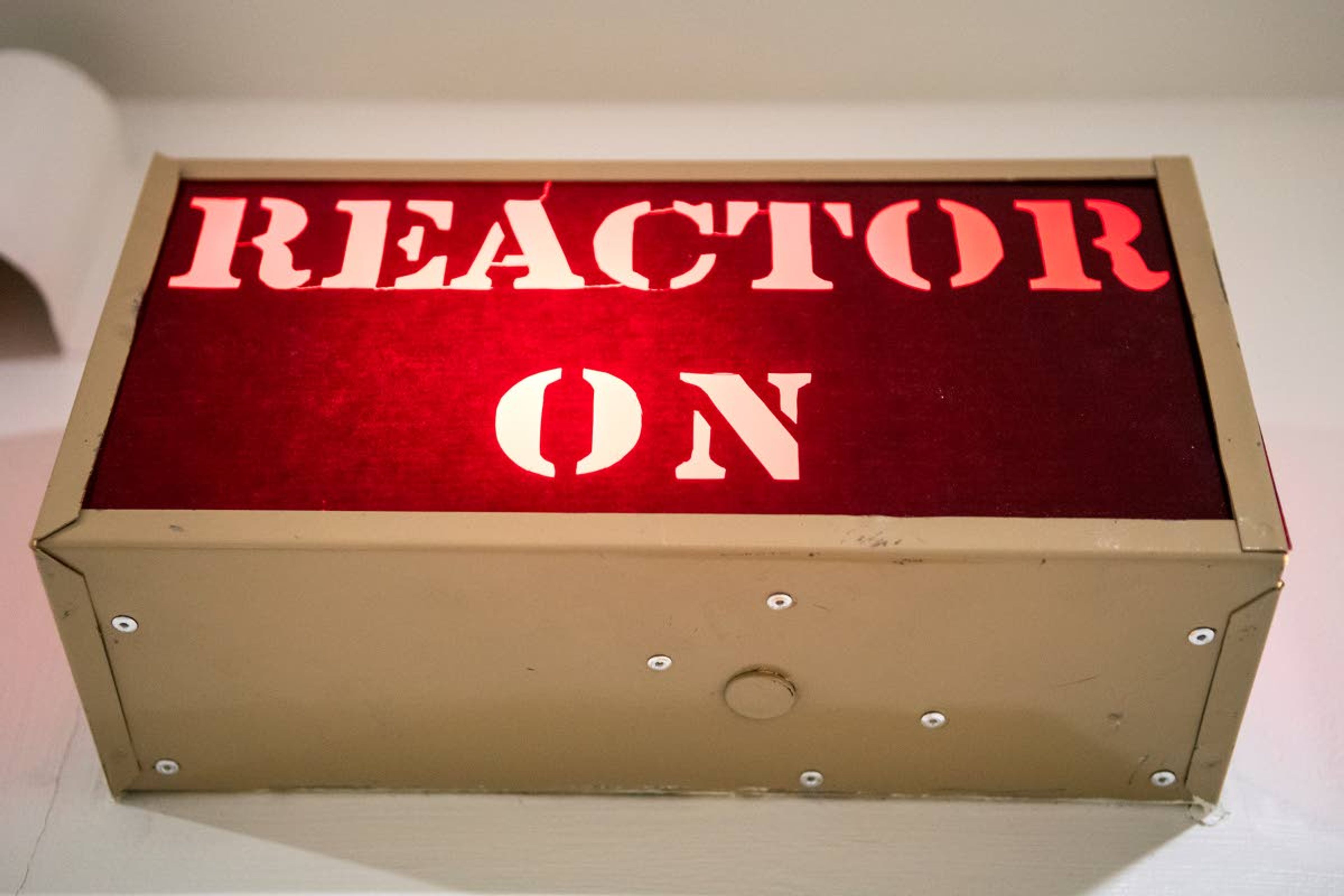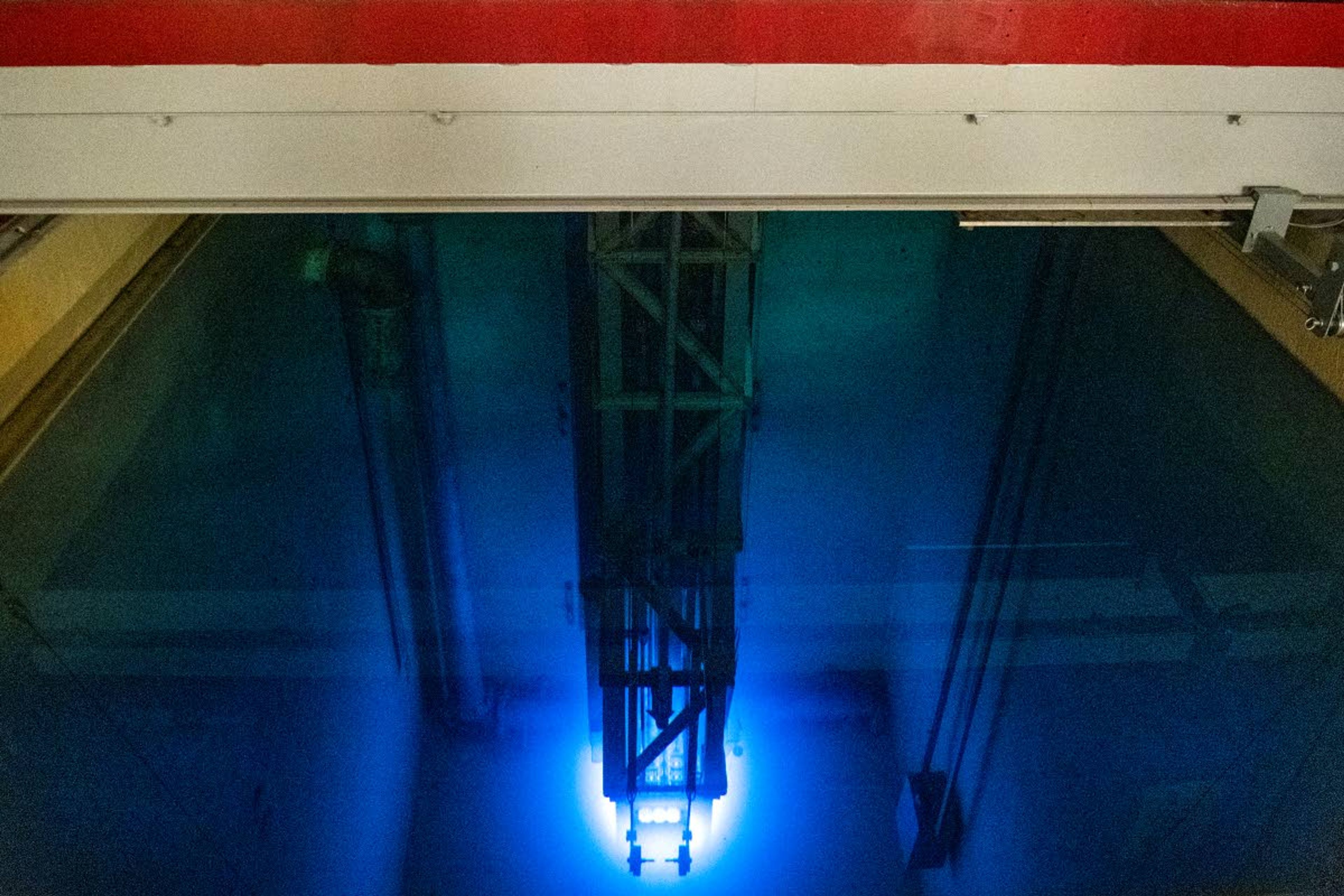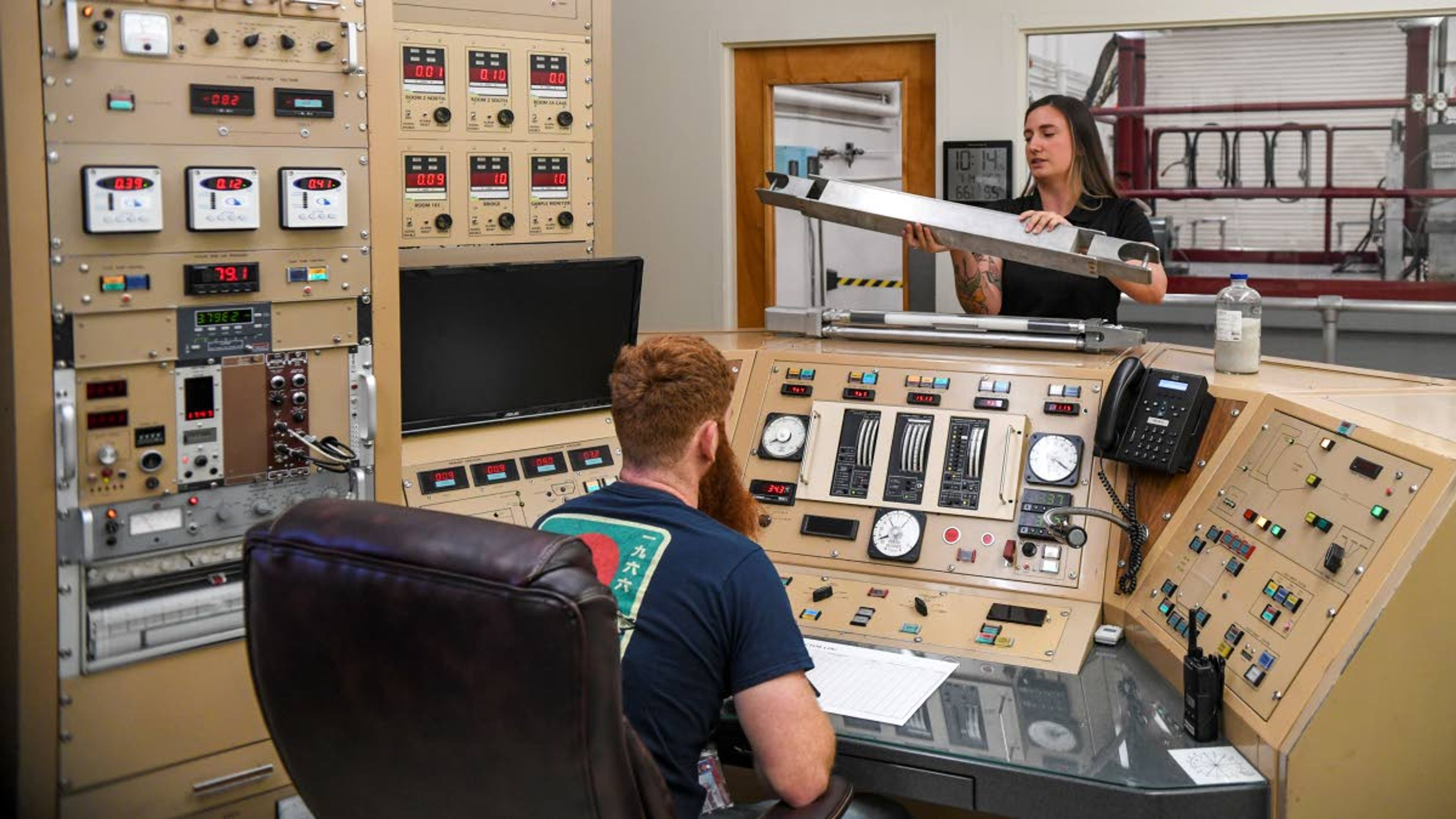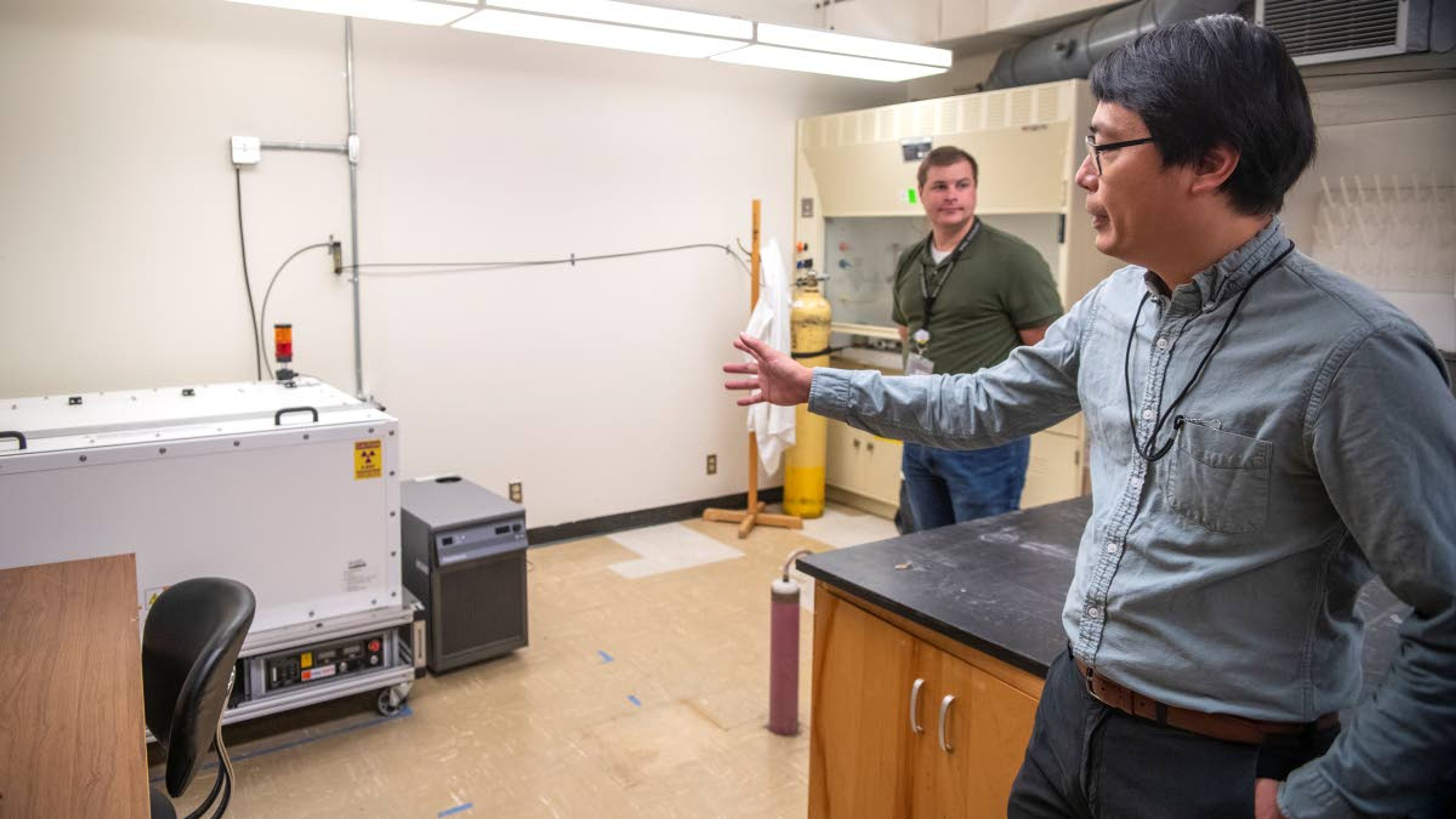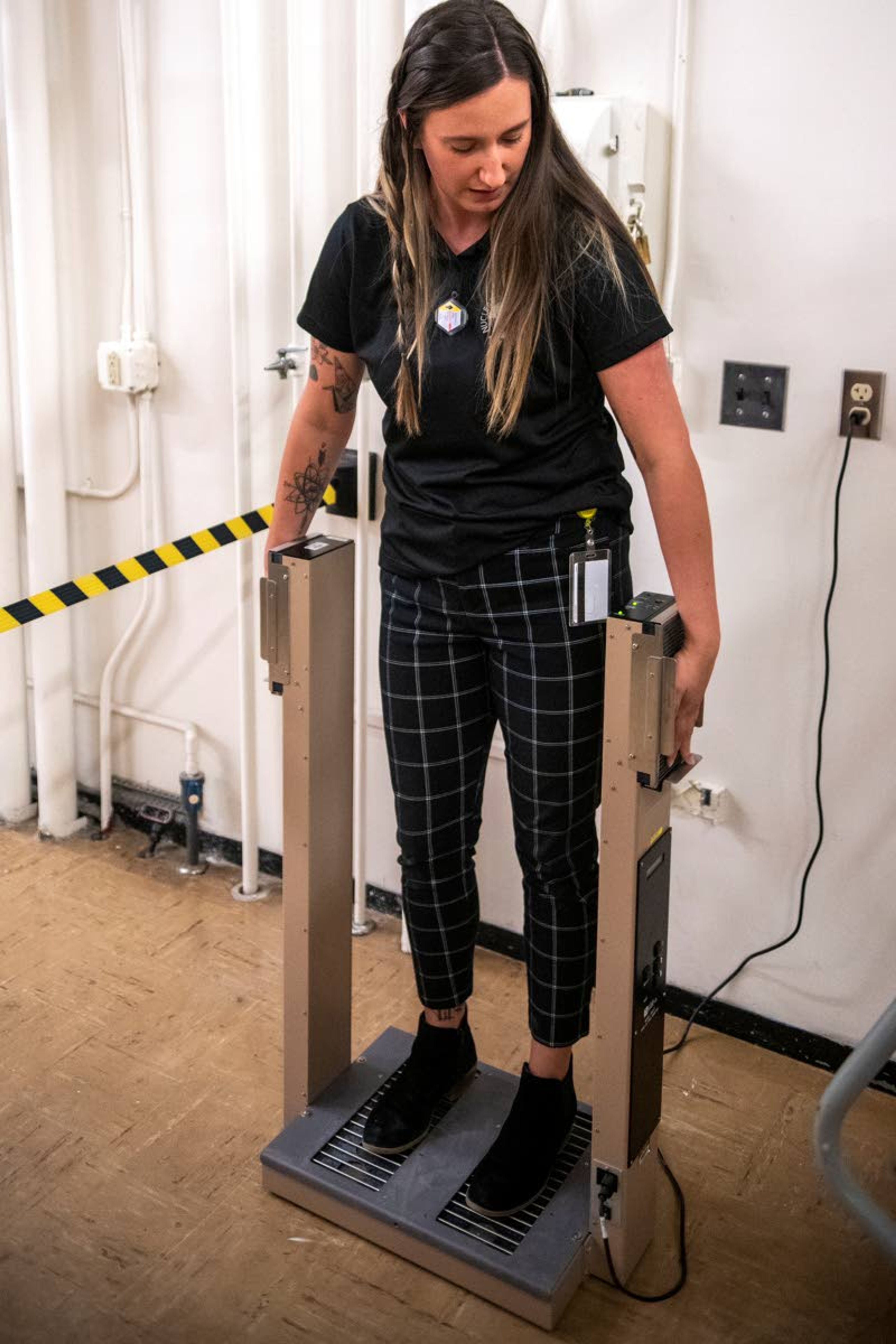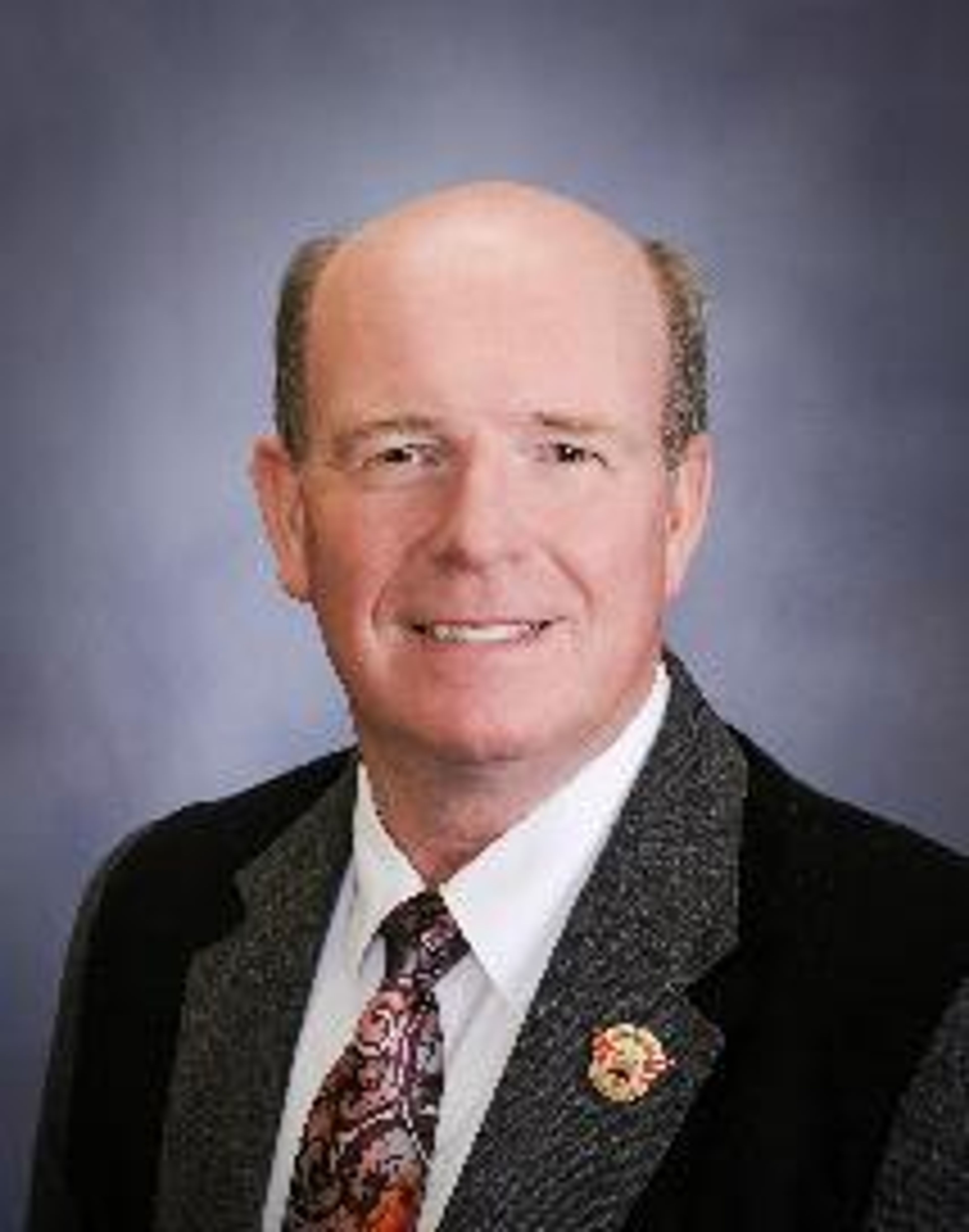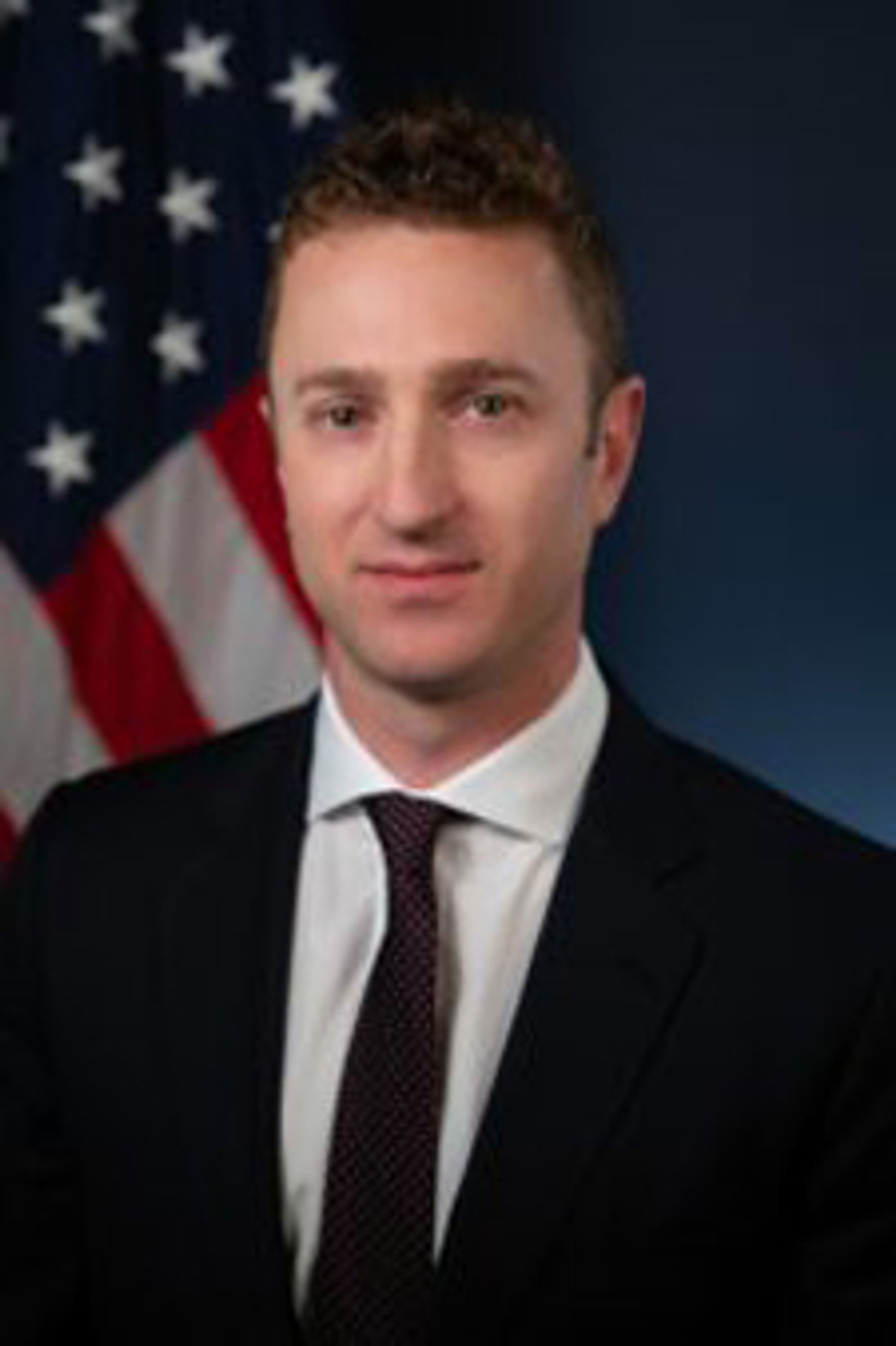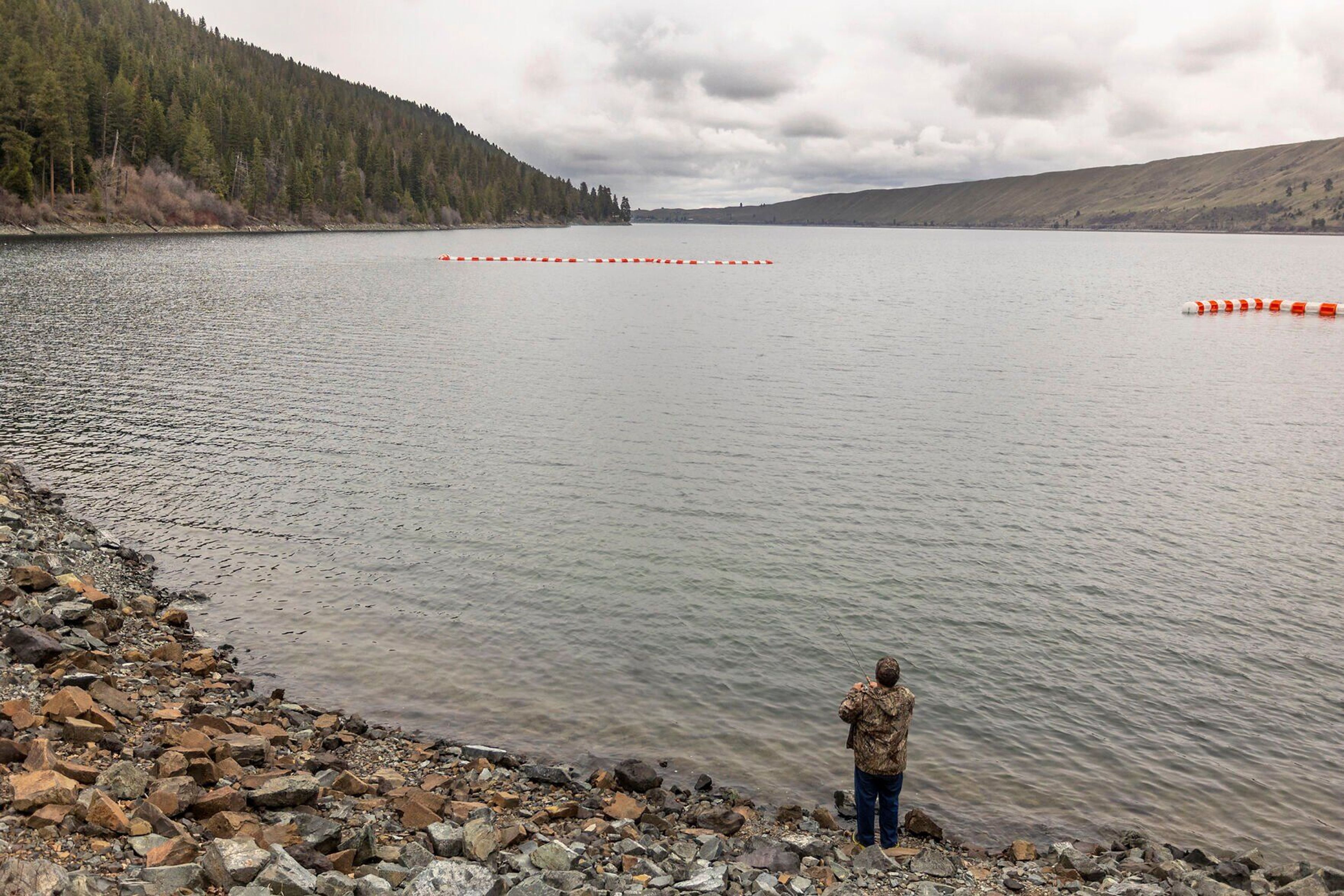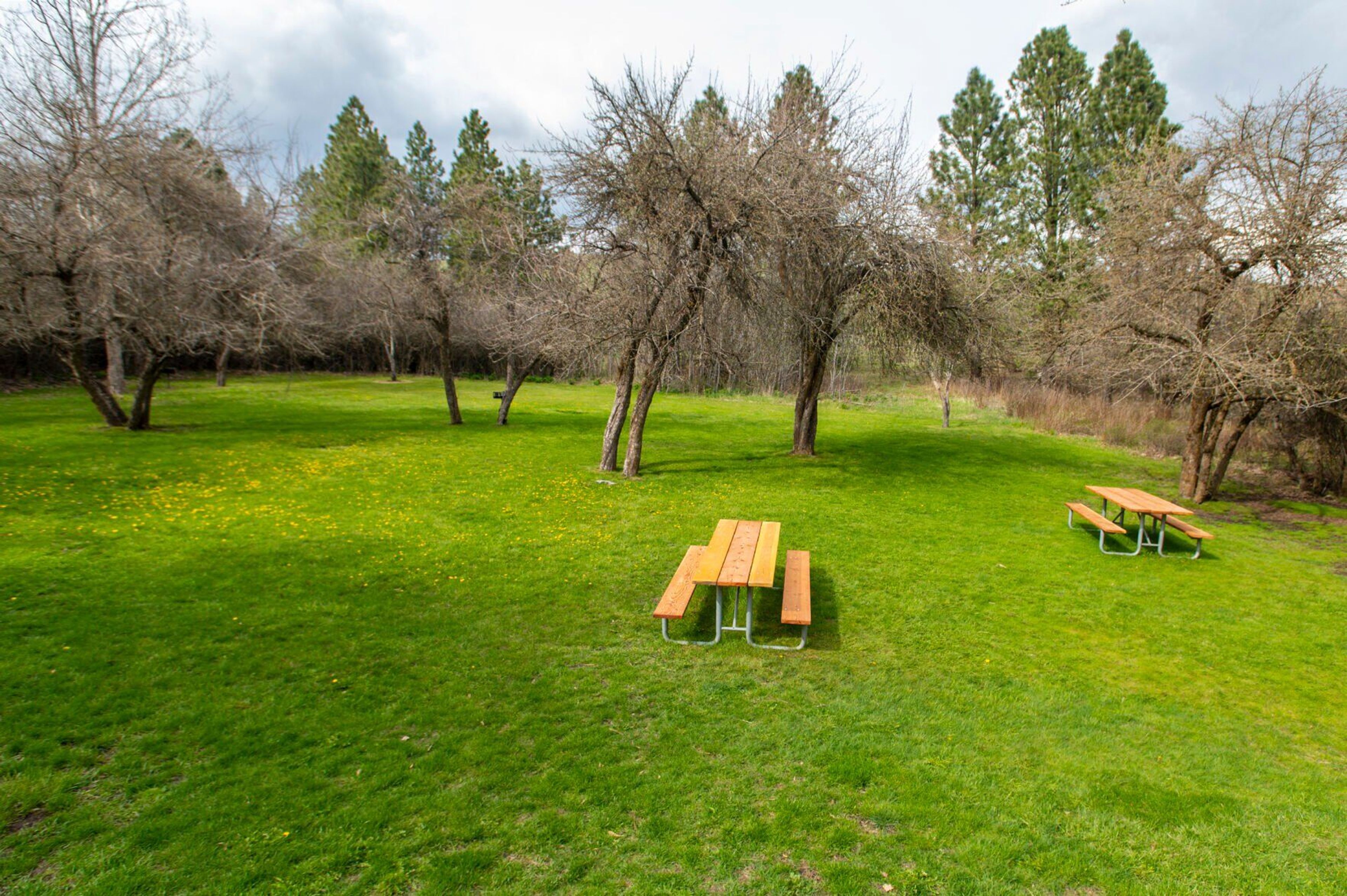Nuclear Science Center at WSU expands capabilities in fast-growing — and eerily glowing — field
Thanks to a steady influx of grant funding in recent years, Washington State University’s Nuclear Science Center has acquired a raft of state-of-the-art equipment significantly expanding research capabilities.
The center, located in the school’s Dodgen Research Facility on the northeast edge of campus, is a hub for scientific collaboration at WSU, as well as the unlikely home of an operational nuclear reactor.
NSC Director Corey Hines said grant funding from the U.S. Department of Energy and other sources have enabled the center to buy a variety of new instruments as they’ve emerged as a sort of one-stop shop for all things nuclear.
Hines said in the last three years alone the facility has established a fully equipped thermochemistry lab, purchased a new X-ray diffractometer used to analyze the atomically fine structure of a material and purchased a chest freezer-sized spectroscopy machine called an XAFS. By the end of next year, the center will also house a new small angle X-ray scattering instrument, or SAXS.
These instruments represent hundreds of thousands of dollars in grant funding, Hines said.
Liane Moreau, an assistant professor and research scientist at WSU, said these kinds of instruments are few and far between, noting the closest SAXS is in Berkeley, Calif., so having access to them in one facility is a major advantage to researchers.
She said normally, to use equipment like an XAFS or SAXS for her research, she would have to go through a lengthy application process for relatively limited access, whereas, in Pullman, she will be able to perform the same experiments without leaving the building.
She said having access to this kind of equipment in the same facility as a nuclear reactor is a particularly unique privilege.
“Let’s say we generated a material using the nuclear reactor, we could then directly look at that in our instrumentation here, so it allows us to have capabilities that we don’t have anywhere else,” Moreau said of the SAXS. “To our knowledge there isn’t another instrument in the world that actually exists in the same facility as a nuclear reactor.”
Moreau said there are also major challenges to shipping and transporting radioactive material, and having access to these machines on one site in many cases eliminates the need to move the material from place to place.
Hines said the equipment available at the center, including the reactor, can aid in a broad variety of research disciplines.
For researchers, Hines said it is the NSC’s role to allow faculty members to do nuclear-related research safely and effectively, with a specialized staff to lean on for support. He said the center is being operated as a “user facility.”
“So, in addition to the reactor and everything that is going on there, we are getting faculty members from chemistry, and engineering and material science to come set up shop at this facility to do all of their radiological work (and) nuclear work that we can help with,” Hines said. “They’ve got a built-in staff with decades of experience working with these materials, our staff can perform experiments (and) we can help write grants.”
The nuclear reactor room itself has a quiet drama to it. The core, located at the bottom of a deep, placid pool, gives off an eerie, sci-fi-blue glow. The tranquility of the display belies the jaw-dropping power the core generates through nuclear fission — the scientific slicing of an atom’s nucleus. As WSU’s website notes, burning a molecule of coal can generate around four electron volts of energy, while splitting just one atom through fission generates 200,000,000 electron volts.
Research project engineer and senior reactor operator Maddison Heine said a recent virtual tour of middle-schoolers was preoccupied with what the water insulating the core might taste like. Bland, she guessed.
While the core generates a tremendous amount of power, it is not used to provide energy to the electrical grid. Hines said the reactor is primarily used for teaching, research and the production of radioisotopes.
He said services provided by the center support “everything from the medical side of things where diagnostic radiotherapy is used every day, to the next generation of reactor fuels that are being proposed that people are working on, to the material side of things,” Hines said. “There’s just a lot of different questions and the role of the (Nuclear) Science Center staff is to kind of enable that discovery.”
Jackson can be reached at (208) 883-4636, or by email to sjackson@dnews.com.
